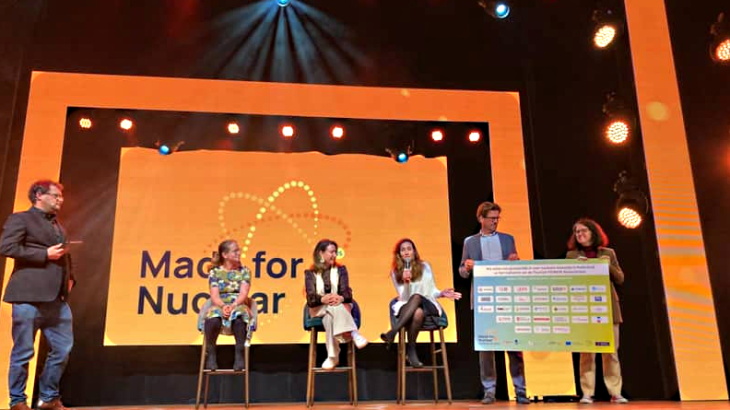Kazakhstan's Institute of Nuclear Physics has implemented "significant" modifications and upgrades to improve the safety of its research reactor, an IAEA Integrated Nuclear Safety Assessment of Research Reactors (INSARR) mission has concluded. The IAEA team reviewed the comprehensive safety programs at the light water reactor called WWR-K, including improvements to reactor safety systems and to the training and qualification program for staff.
.jpg) |
| The WWR-K research reactor at Alatau (Image: P Chakrov / Institute of Nuclear Physics) |
The 6 MWe reactor, which is located at Alatau, near Almaty, is used for the production of medical and industrial radioisotopes, scientific research and testing nuclear materials for industrial use. It was commissioned in 1967, when high-enriched uranium (HEU) fuel was typically used to conduct scientific experiments. A program to convert WWR-K to low-enriched uranium (LEU) started in 2008 with the repatriation of used HEU fuel. The WWR-K was shut down in 2015 to implement a number of modifications at the reactor to allow for the conversion, which was completed last year.
"The research reactor is now starting a new life after major modifications and refurbishment including conversion from the use of HEU to LEU to further serve science and the national economy," said Yergazy Kenzhin, general director of the Kazakh institute. The recommendations provided by the IAEA review mission will help to ensure further continuous safety improvements, he added.
The team noted the implementation of recommendations of the previous INSARR mission in 2008, which included those related to management system, training and qualification of personnel, and radiation protection. Its leader, David Sears, said additional recommendations on safety analysis, ageing management, safety of experiments and emergency preparedness were provided during this mission.
The mission was conducted between 27 February and 3 March.
Researched and written
by World Nuclear News




_34792.jpg)
_16403_79272.jpg)



_76087_55556.jpg)



